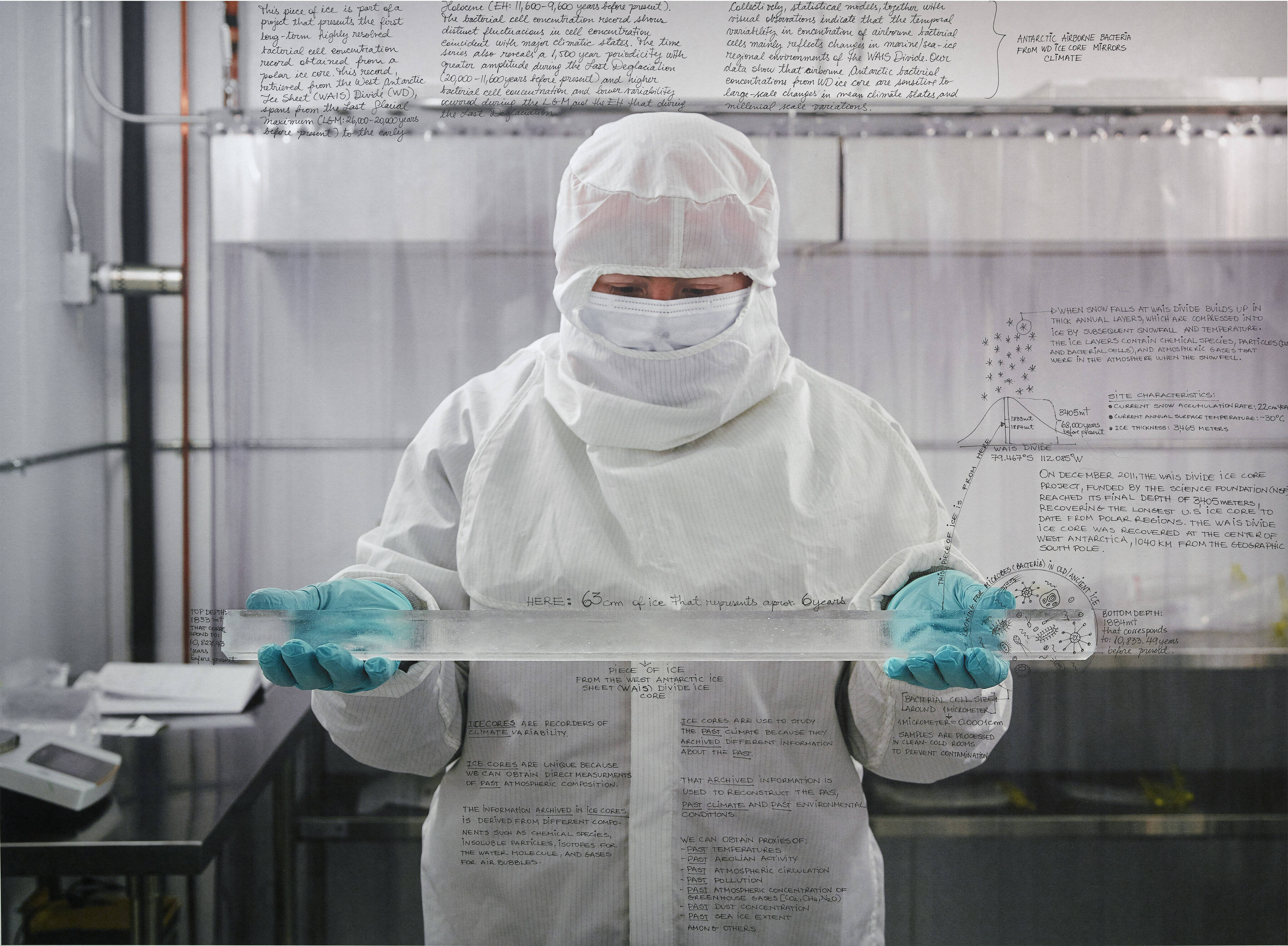
Artist's statement: Climate change has compressed and conflated human and geologic time scales, making it essential to find ways to conceptualize “deep time.” This work seeks to make notions of deep time comprehensible through visual exploration of glacier ice, as well as other earthly archives. This project includes intimate collaborations with paleoclimatologists by having them annotate directly onto my photographic prints — a contemporary taxonomy of ice and climate. This portrait was photographed in a cold/clean lab at Montana State University. The ice shown is 10,827 (left side) to 10,833 years old.
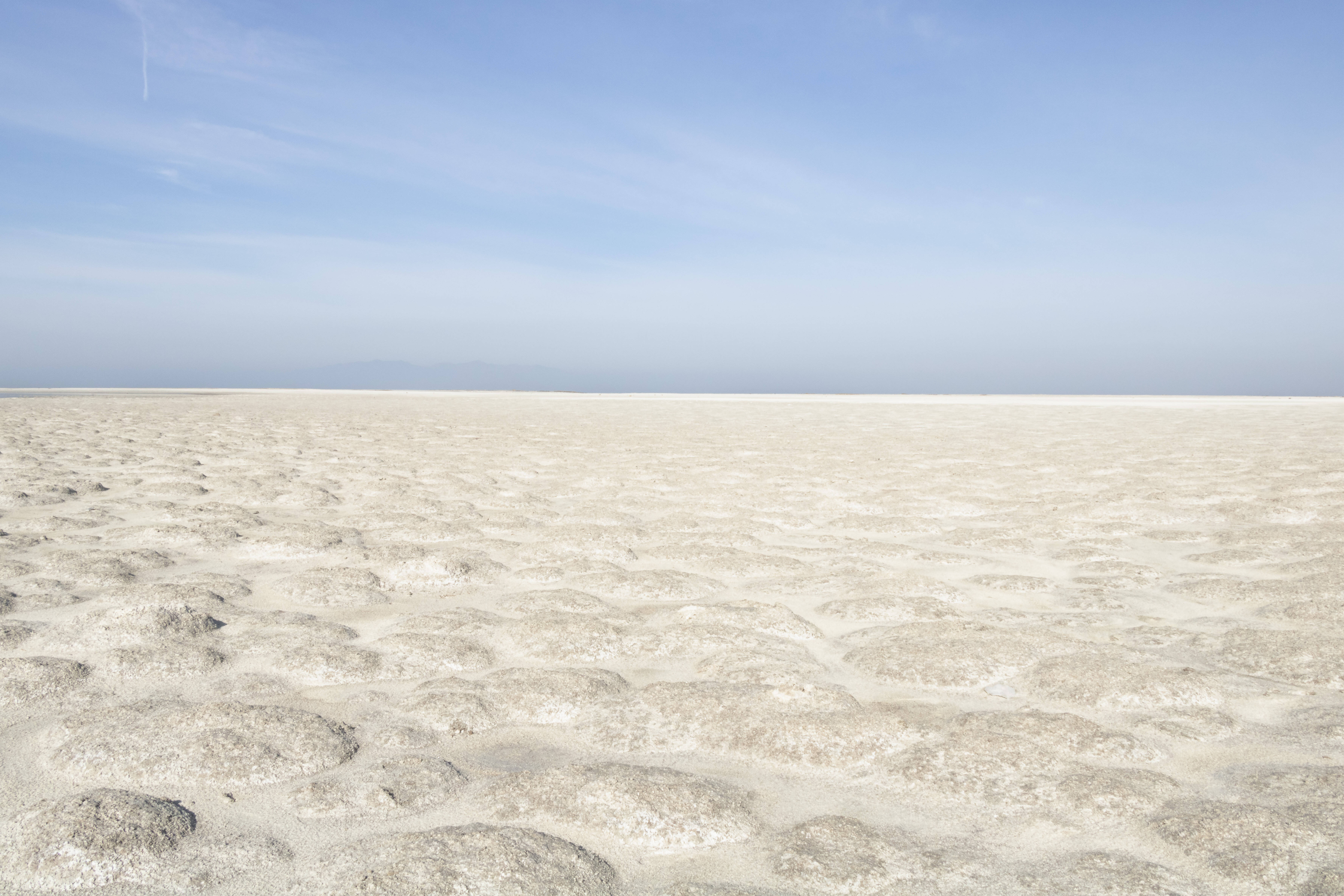
Katelyn Garcia, The Dust We Will Breathe (2022, inkjet print)
Artist's statement: The Dust We Will Breathe is a photograph of the drying lakebed of the Great Salt Lake, a graveyard of once underwater mounds made of microbial organisms. Human consumption is mostly to blame for the lake reaching historic lows, which is compounded by climate change and the west’s current megadrought. If no drastic changes in consumption are made, the lake will be gone in 5 years. Every day that more lakebed is exposed, we will breathe in more of its toxic dust.

Christian Murillo, Glaciers, Last Call (2022, photographic print)
Artist's statement: The Sulphide Glacier on Mt. Shuksan receives the last ray of light, resembling a glimpse of hope for the glaciers in the North Cascades. As a landscape photographer, I am constantly searching for wilderness areas that provoke the juxtaposing themes of power and fragility, particularly in the context of climate change. I aim to draw my audience in with the beauty of the landscapes and inspire them to contemplate the intrinsic value of wild spaces. We cannot truly protect something we do not love, and we cannot love something that does not move

Artist's statement: 'Climate Change - Hurricane' explores human influence on climate forces, which in turn impact the human environment. The collage piece reads from left to right and includes mixed media, maps, and blue tarp material, which is pervasive in areas that have lost roofs from high wind. The piece concerns sea level rise and the increased intensity of hurricanes, particularly in Puerto Rico and the Caribbean islands. Of note is the impact on populations that repeatedly face displacement, loss, and hardship, and are economically ill-equipped to fully recover.
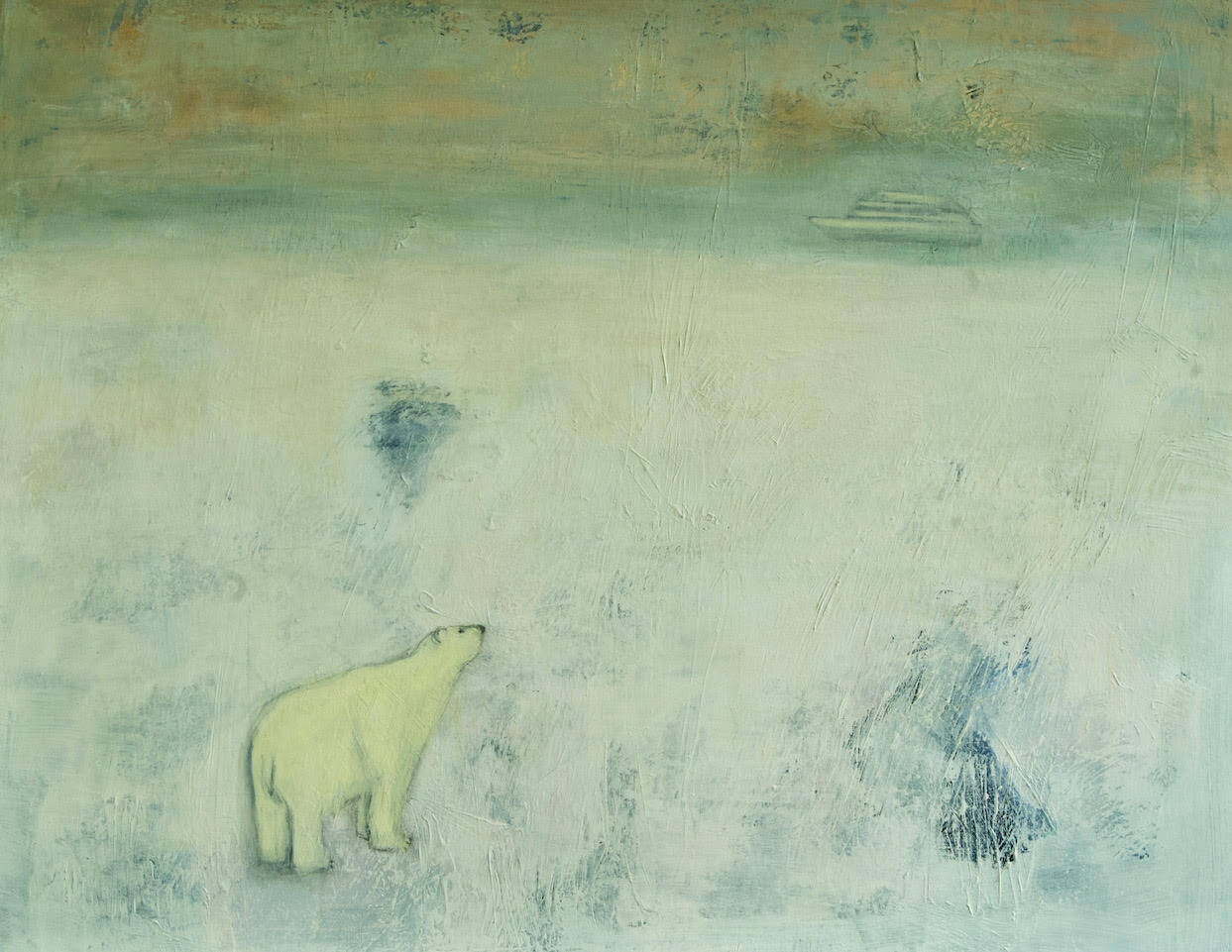
Pia de Giralamo, Invasion (2020, acrylic on canvas)
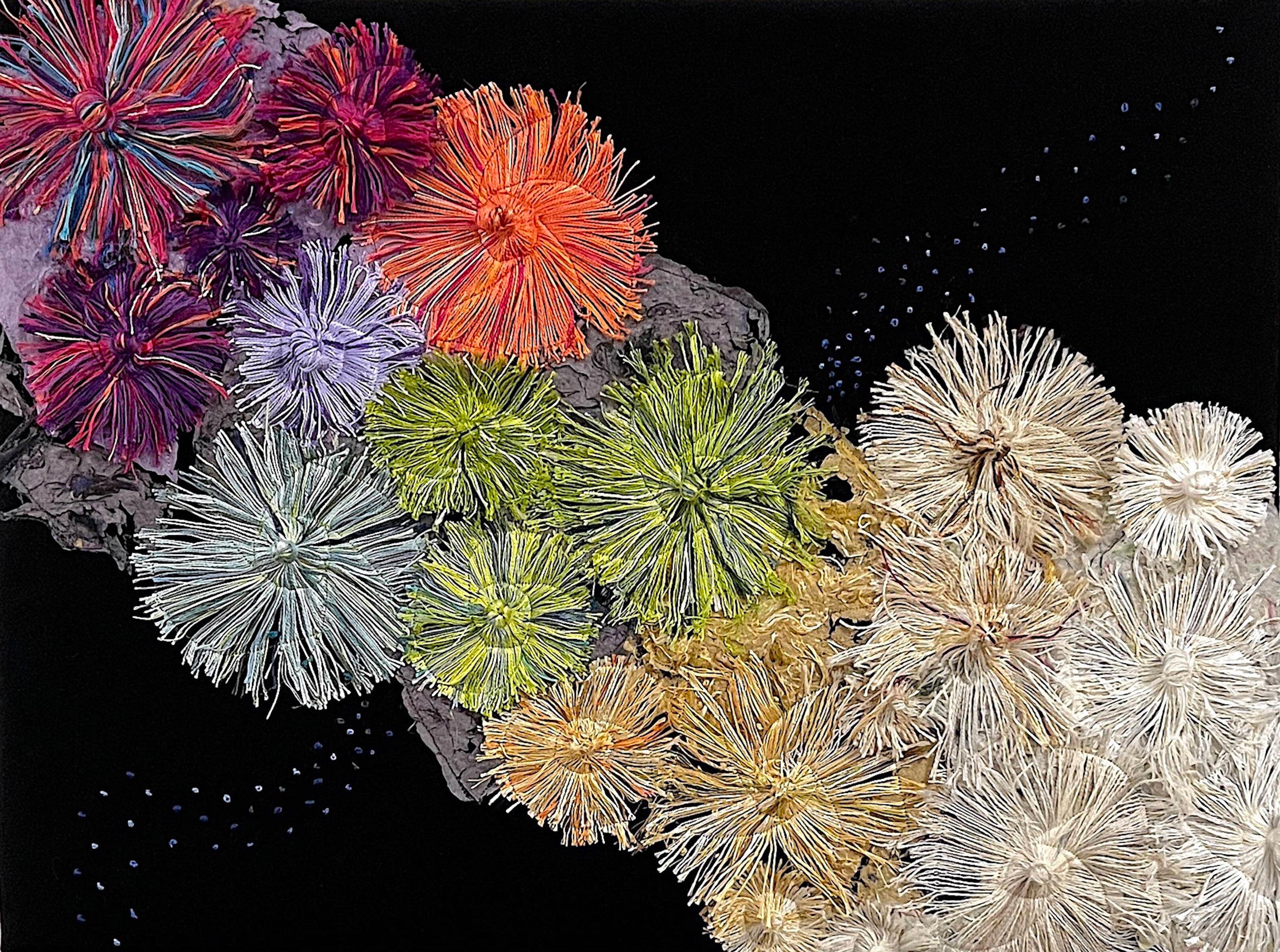
Artist's statement: Coral reefs are being threatened globally from climate change, unsustainable fishing, and land-based pollution. This piece recalls coral reefs and their inhabitants. As reefs deteriorate, they lose their vibrant color and their ability to provide nutrients and shelter to thousands of marine species. Here, the gradation from color to monochrome represents the bleaching that occurs as coral dies. We need to protect these crucial ecosystems, or we lose them. I used upcycled remnant warp yarns for the coral clusters and created handmade paper.
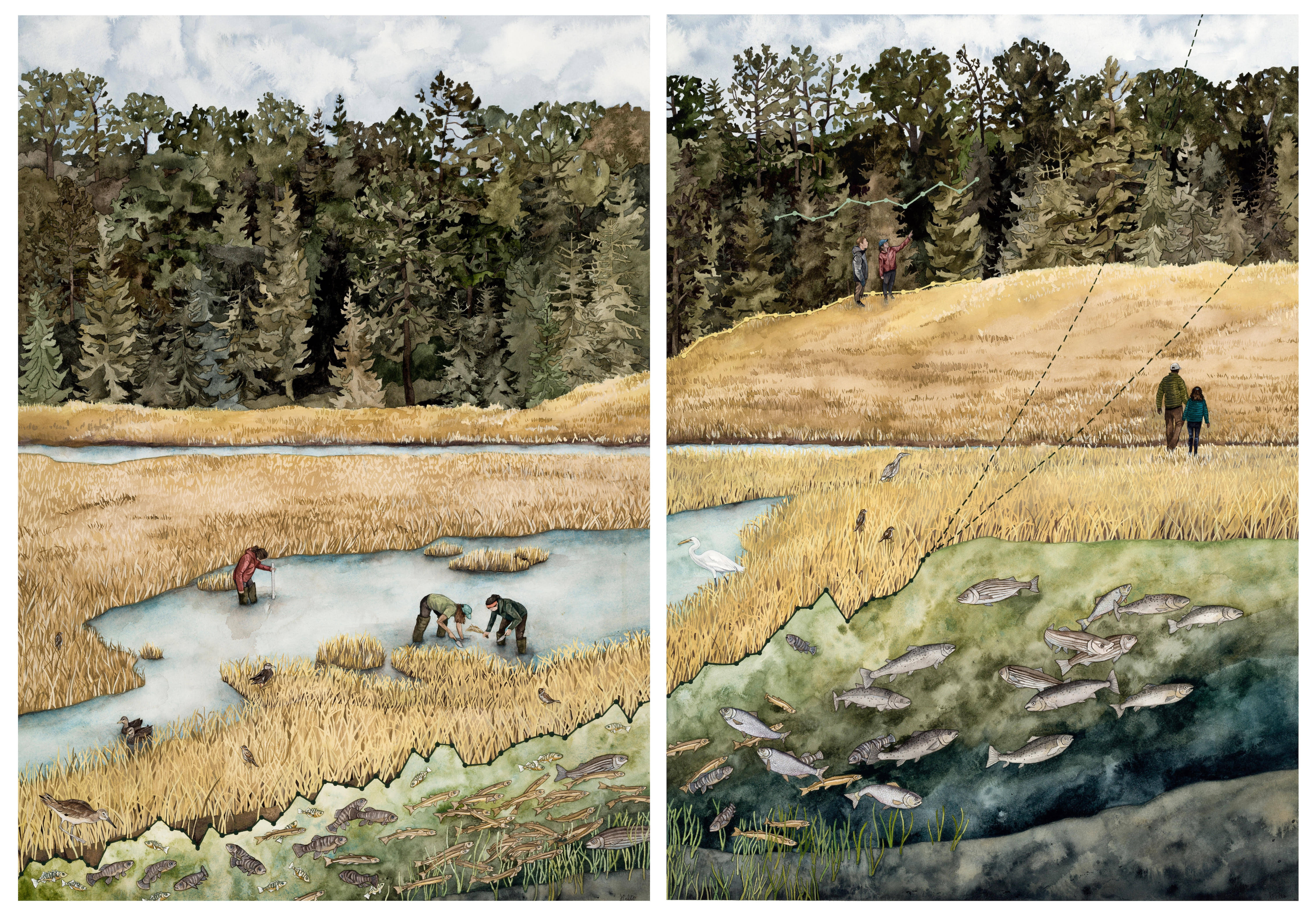
Artist's statement: This work addresses the ways humans and natural habitats are responding to climate adversity in the Gulf of Maine. Three line graphs are incorporated into the painting. They depict, from bottom to top: historic sea level rise from 1950-2021 and projections for future rise to 2050; the increase in National Wildlife Refuge acreage in Massachusetts, Maine, and New Hampshire from 2001-2020; the increase in the percentage of US adults who supported policies to protect the environment from 2008-2019. Together, these data show how public efforts are rising to meet the tide.
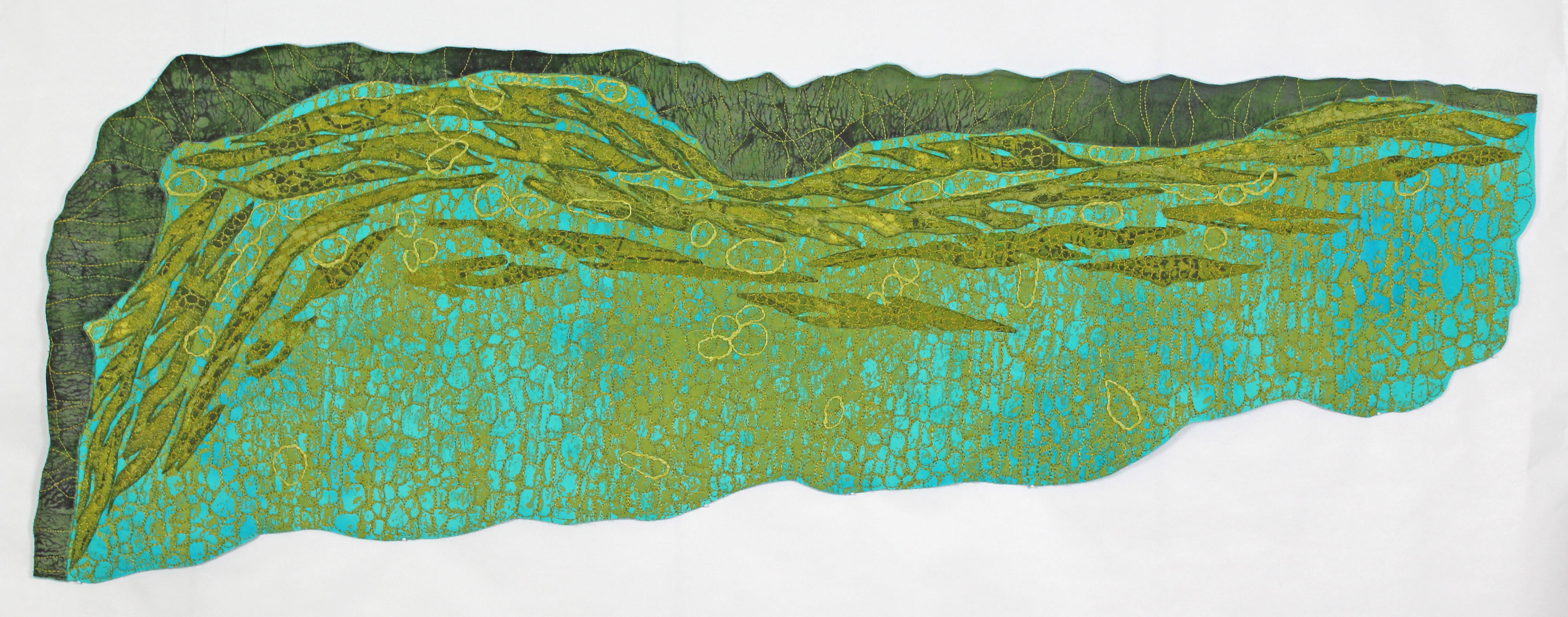
Artist's statement: In this piece I use paper lamination, dyeing, painting, flour paste resist, screen printing, and stitching to create work about human relationships with the earth. I live on the western edge of the Lake Erie watershed where fertilizer runoff from farms and lawns has resulted in the development of huge algae blooms on the lake. To me, these blooms can appear eerily beautiful at times, but they pose a serious danger to the life of the lake. This problem is an issue in many places throughout the country.
See more images by visiting the USGCRP's Art X Climate Gallery.
